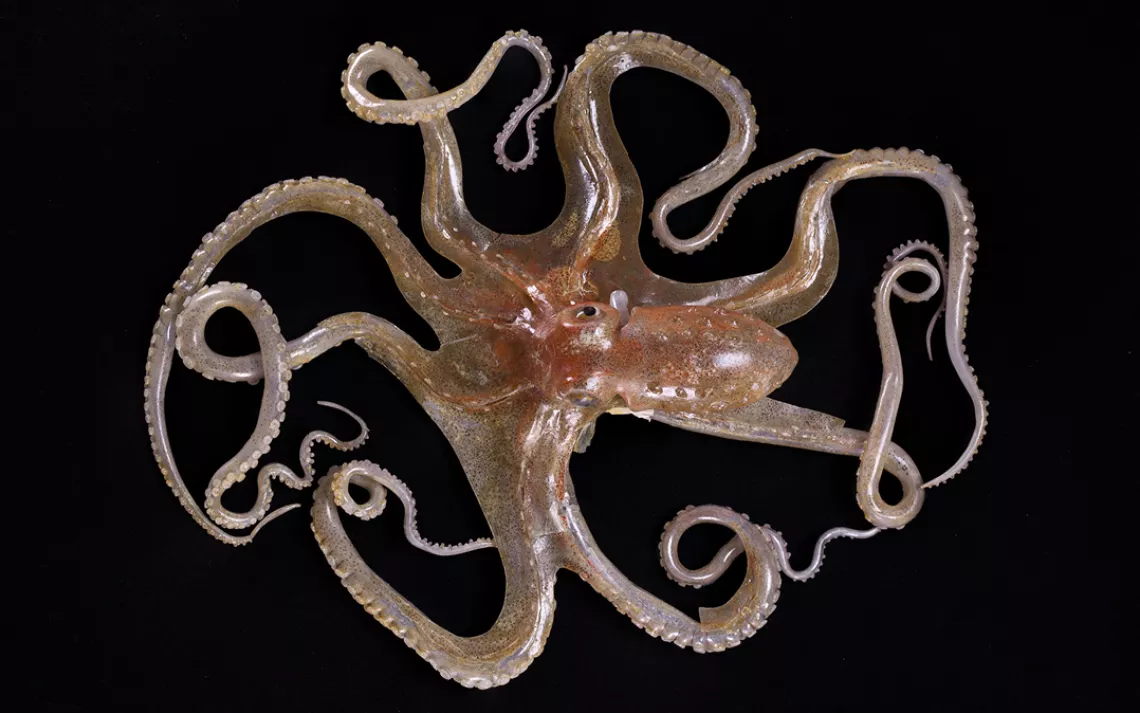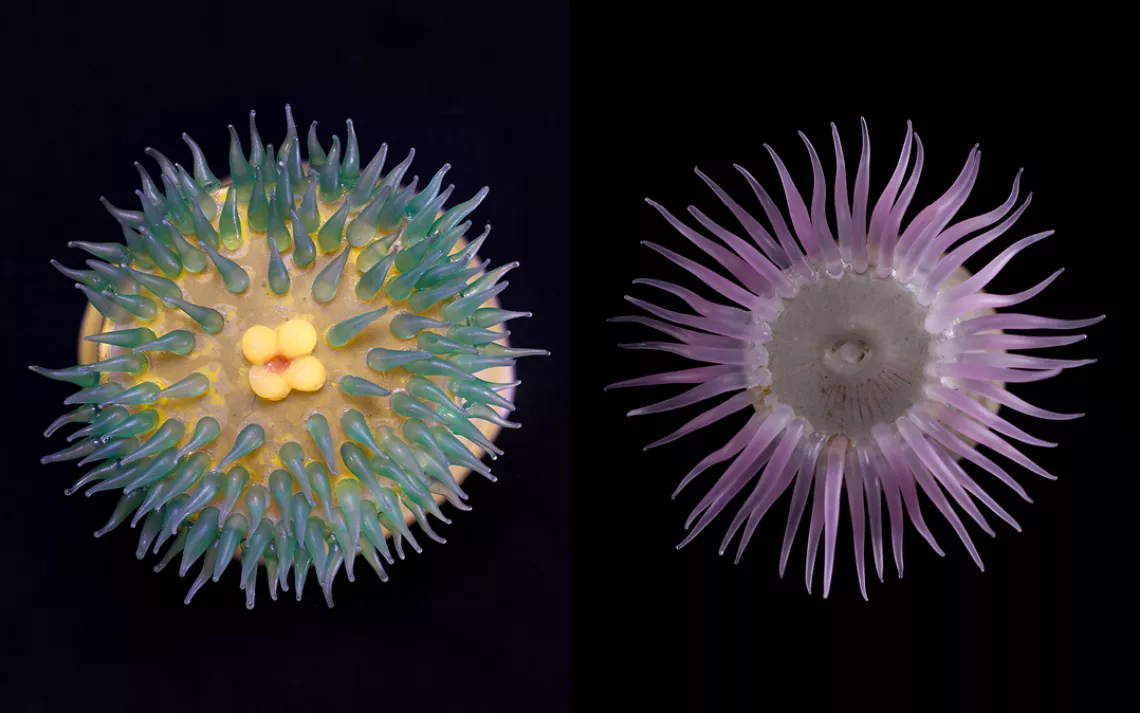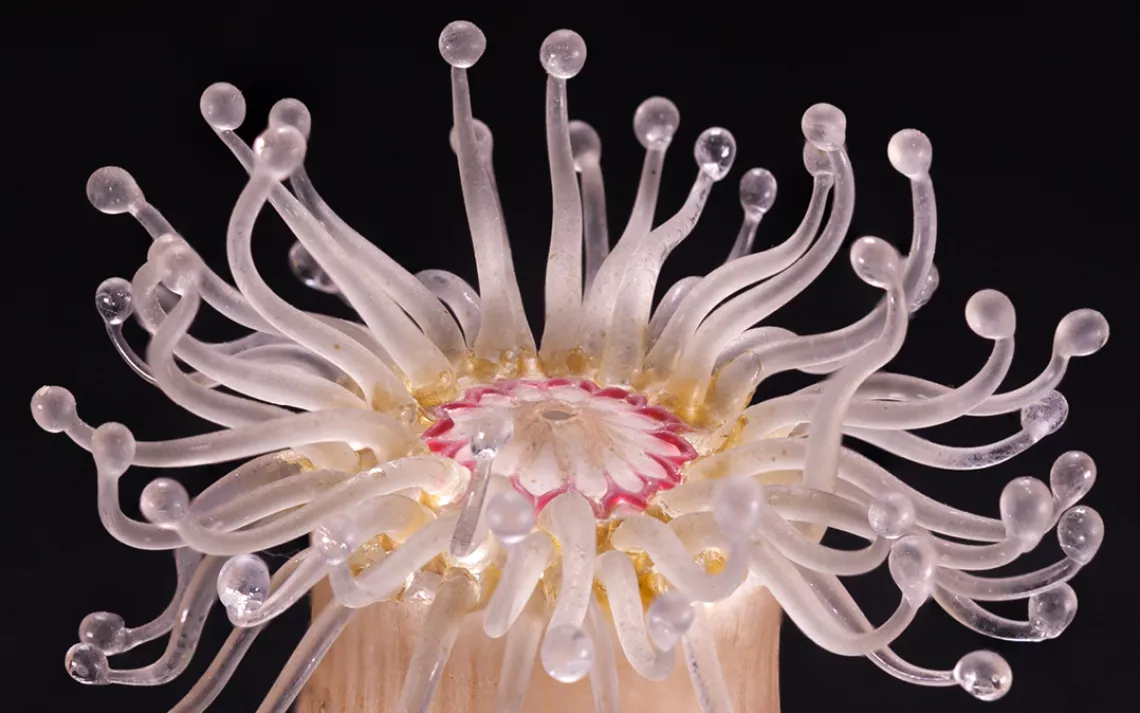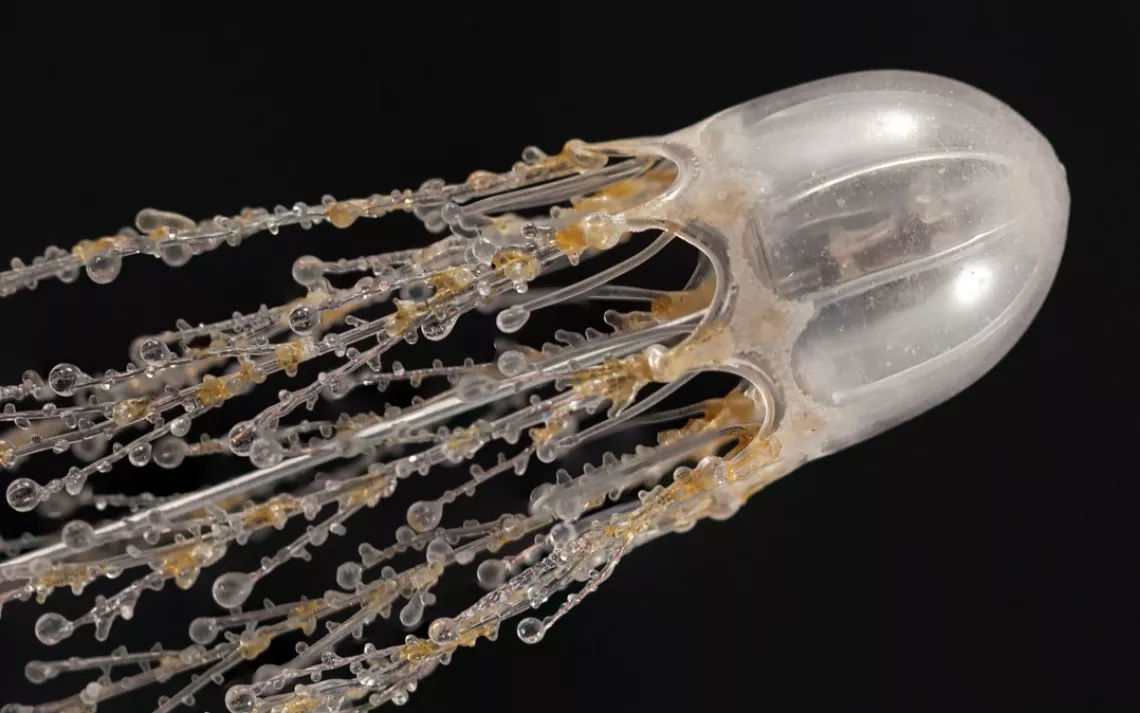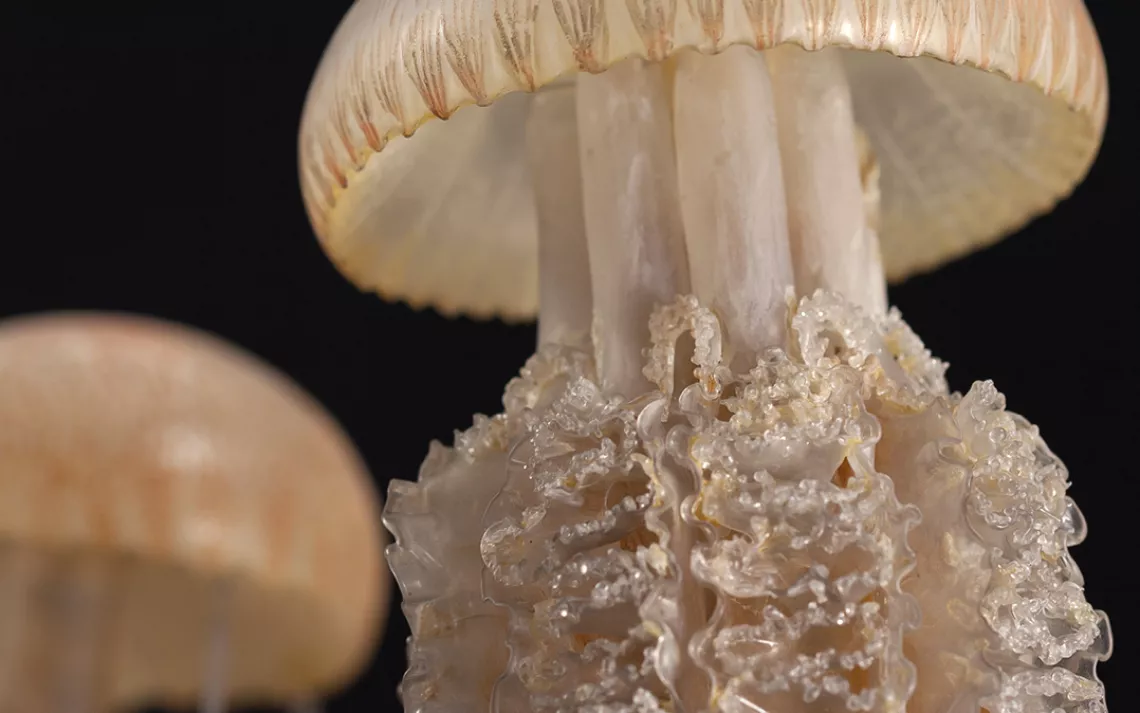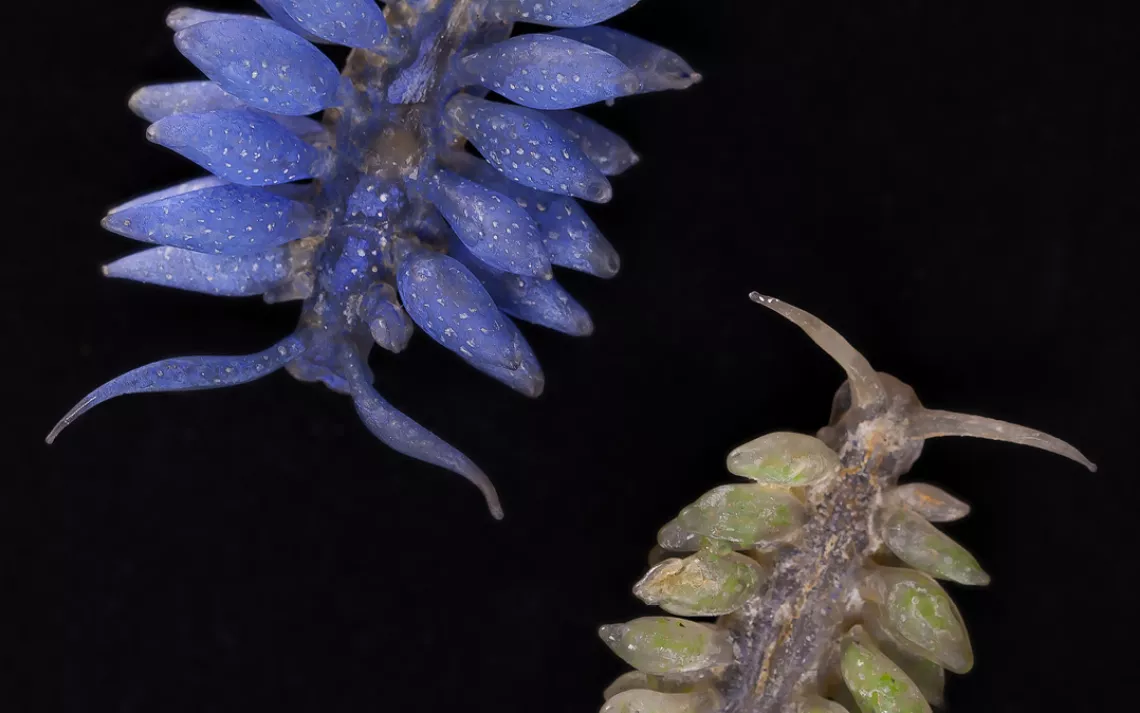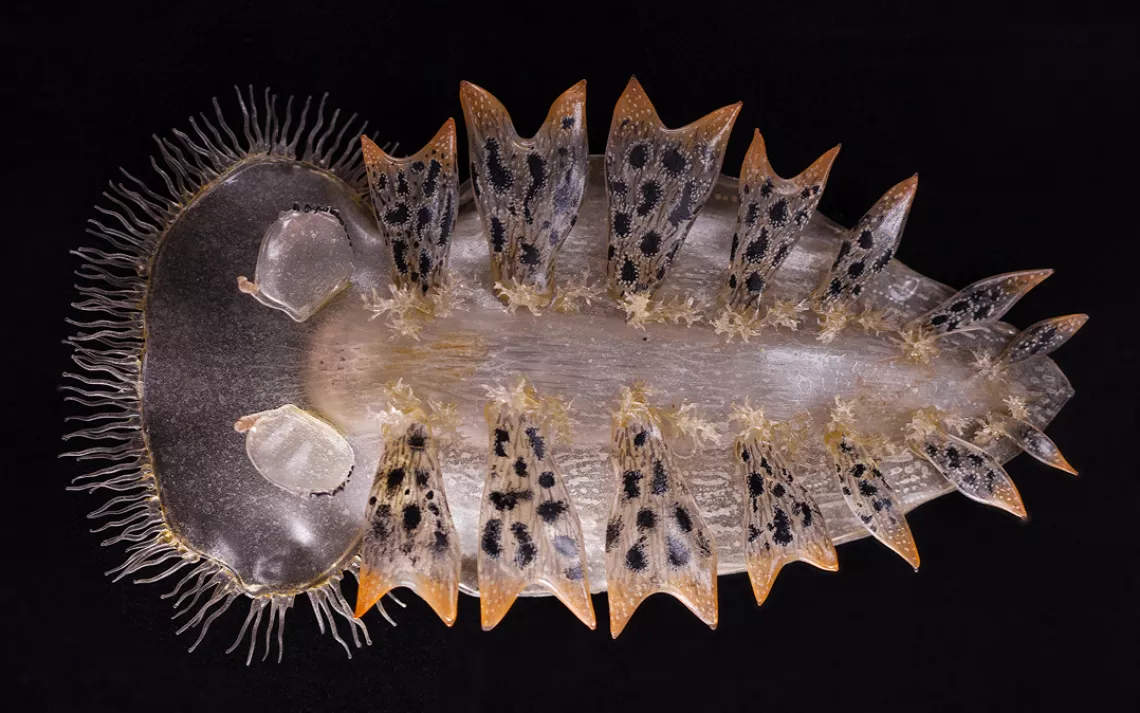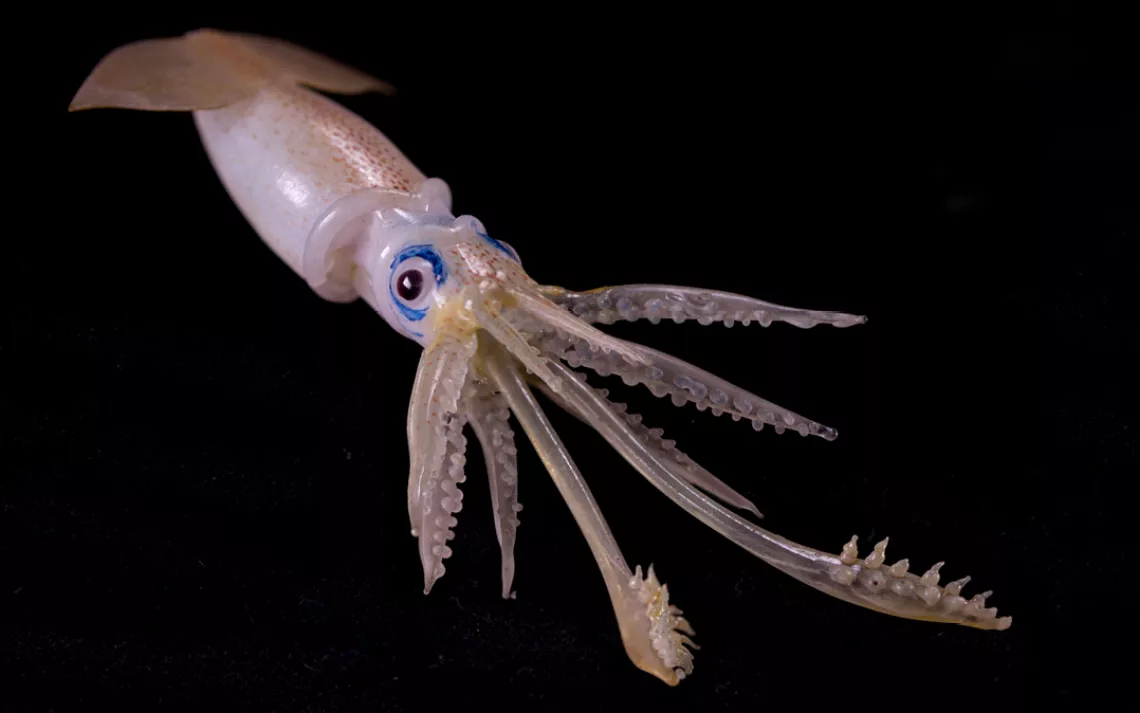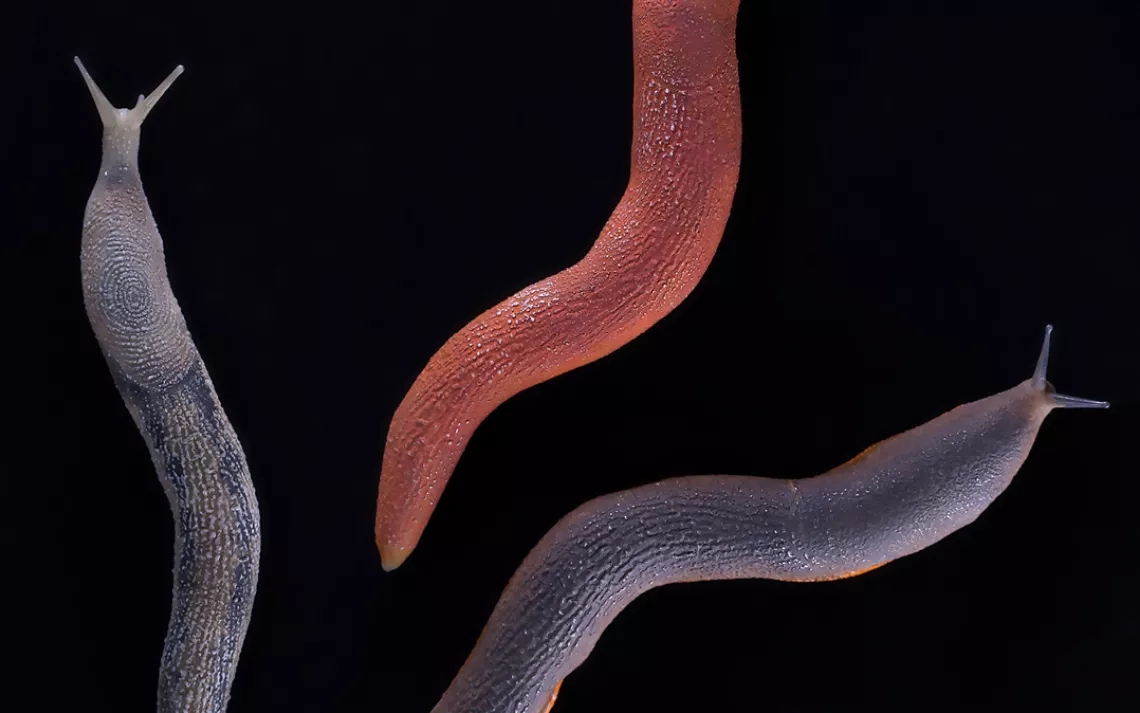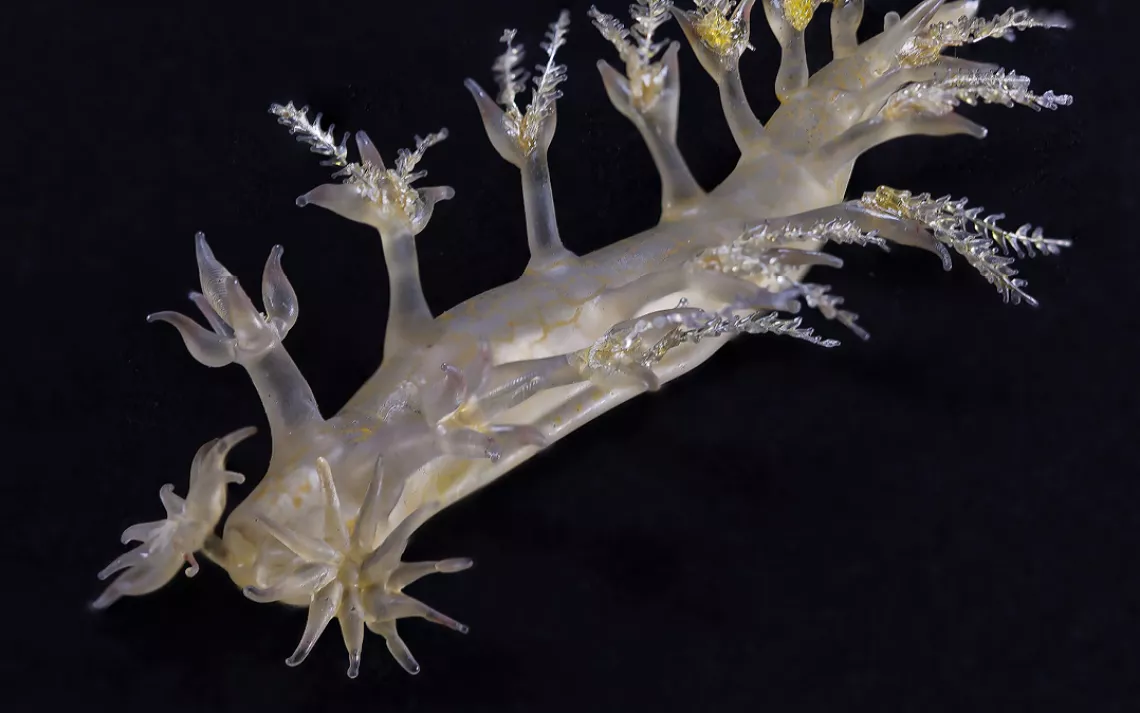Sea Creatures in Glass
A new photo book highlights beautiful scientific sculptures of marine invertebrates
Photos by David O. Brown/Presidents and Fellows of Harvard College
Sea Creatures in Glass (Scala Arts Publishers, $16) is the culmination of the Harvard Museum of Comparative Zoology's project to restore 430 glass sculptures of marine invertebrates made more than a century ago. A father and son, Leopold and Rudolf Blaschka, painstakingly created the models beginning in 1865. Leopold was inspired to craft them after a trans-Atlantic voyage in 1853 ignited an interest in natural history. Another father-son duo at the Harvard Museum, Louis and Alexander Agassiz, bought the creations in the 1870s and 1880s for study. The collection includes octopuses, squid, anemones, jellyfish, and nudibranchs.
Eight years ago, preservation specialist Elizabeth R. Brill began cleaning and reassembling the glass creatures with soft brushes, cotton swabs, and a small keyboard vacuum cleaner. She also mended parts of those creatures that were broken. Today, the models are housed in a secure, climate-controlled facility and rotated out to various museums. You can get the best look at them by going to the Harvard Museum of Natural History, where there is a permanent display, or by looking through the book. You'll understand from this sampling that the meticulously designed sculptures aren't just models for science, but are also works of art.
 The Magazine of The Sierra Club
The Magazine of The Sierra Club
